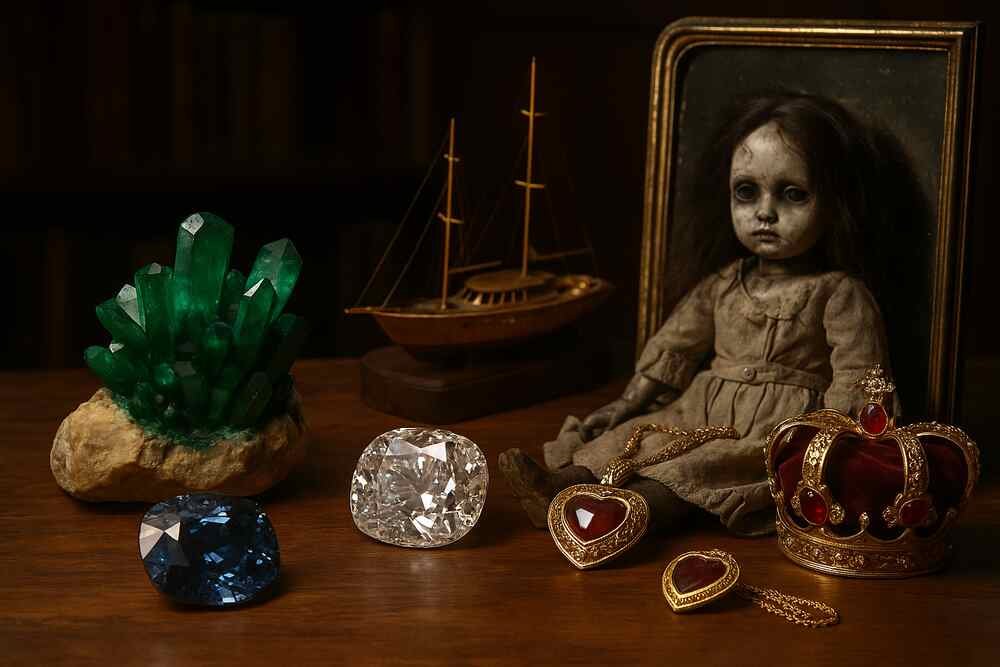Empress Sissi the Austria’s free-spirited Empress
Ernst Marischka’s series of films with Romy Schneider locked Sissi in a golden straitjacket of stunning dresses and wild waltzes. But who really was Empress Elisabeth of Austria?
Independent and free, Empress Sissi was above all a modern woman. Sissi is depicted there as a cutesy princess. The story is very romantic. This vision is very far from reality. Empress Sissi wanted to be free, to free herself from the label. She is a character much more nuanced and complex than it seems.

The young Elisabeth shortly after becoming Austrian Empress (painted by Amanda Bergstedt 1855). Amanda Bergstedt (1841-1918), Public domain, via Wikimedia Commons

Photo taken on the day of Empress Elisabeth’s coronation in Budapest on June 8, 1867. Emil Rabending, Public domain, via Wikimedia Commons
An unexpected marriage with Franz Joseph I
Duchess Elisabeth Amalie Eugenie in Bavaria (Empress Sissi) was born on December 24, 1837 in Munich. She is the daughter of Ludovica and Maximilien in Bavaria. The destiny of the young girl took an unexpected turn in 1853 when she accompanied her sister Helene to Bad Ischl (citiy in Austria), who was promised to their cousin the Emperor of Austria, Franz Joseph I. But the latter falls under the spell of Elisabeth and decides to marry her. A project disapproved of by his mother, Archduchess Sophie, to whom he is very close. He will however oppose her and the couple’s marriage is celebrated on April 24, 1854. Elisabeth is then only 15 years old. She was in love as one can be at this age and this marriage marked the end of dreams and carelessness for her. The teenager was not trained in the rigors of a life at court and her husband, monopolized by the outbreak of the Crimean War, is often absent. His young wife is not his priority. They came from two worlds that were difficult to reconcile and were very different. He, very pragmatic and hardworking, she, more mysterious, passionate about art and culture. But they were nevertheless very attached to each other. The very fort de Sissi was also its charm, and that pleased Franz Joseph. The environment of the court becomes a straitjacket (a strong garment with long sleeves which can be tied together to confine the arms of a violent prisoner or mental patient) and Sissi understands very quickly that this life in the palace is a golden prison.

The Duchesses Helena and Elisabeth in Bavaria. “Néné”, 19 years old, on the left and “Sissi”, 15 years old, on the right (1853). Maybe Augusto Cesare Colla: Greek-Italian photographer (1821 – 1888), Public domain, via Wikimedia Commons
1st daughter
A first daughter, Sophie, was born in 1855 and the couple welcomed Gisele in 1856. The two children were quickly taken over by their grandmother who did not consider Sissi worthy of raising them according to their rank. Sissi rebelled and decided to take the two little girls to Budapest on a trip. That’s where Sophie died after a short illness. Sissi had nothing to do with it but she felt extremely guilty. The relationship with his second daughter Gisèle will remain marked by this tragedy. The male heir was long overdue and it was only in 1858 that Elisabeth gave birth to the long-awaited boy, Rudolf, Archduke of Austria and Crown Prince of the Austro-Hungarian Empire. Sissi was really ahead of her time in her way of educating her son. She took him away from this traditional military education that they wanted to impose on him. She dismisses the too severe tutors whose military methods traumatize Rodolphe, a child very delicate and sensitive, the one who looked like him the most.

Austrian Emperor Franz Joseph I and Empress Elisabeth (called Sisi). Unknown authorUnknown author, Public domain, via Wikimedia Commons
Sissi, Queen of Hungary
The heavy atmosphere of the court weighs on her and Sissi leaves Vienna as often as possible, traveling to Hungary, a country she particularly loves and whose cause she ardently defends, in France, Portugal and Greece. After the signing of the Austro-Hungarian compromise, Sissi was crowned Queen of Hungary on June 8, 1867. Sissi had a fundamental role in the pacification of relations between Austria and Hungary, it is moreover his only real political action. The following year, the Empress gave birth in Budapest to her youngest daughter, Marie-Valérie. She is the only one with whom Sissi will enjoy motherhood, far from the court and the imperial family. Very protective of Marie-Valérie, she encouraged him to make a marriage of love.
A life marked by depression
Sissi was of a shy and melancholic nature. The death of her first love, a squire of her father whom her parents do not consider worthy of her, plunges her into deep sadness. Throughout her life, she had to deal with great psychological fragility and depressive phases. Obsessed with her image, she adheres to draconian diets and mistreats her body with corsets.
After the death of her daughter Sophie, Sissi faced a new tragedy when her son Rodolphe was found dead on January 30, 1889. She would never recover and spent the last ten years of her life away from court, traveling across all of Europe.
May 29, 1857: the death of Sophie, Sissi’s 1st child
From the House of Habsburg-Lorraine, Sophie is the eldest daughter of Emperor Franz Joseph I of Austria and Empress Elizabeth of Wittelsbach.
During her short life, Sophie was not raised by her mother, but by her grandmother, Archduchess Sophie of Bavaria, who considered Sissi too young to take care of a child and wanted to raise her grandchildren. as he pleases.
It was during a trip to Ofen in Hungary in 1857 that Gisèle, Sophie’s younger sister, fell ill. While Gisèle is recovering little by little, she transmits her illness (a priori measles) to Sophie, whose condition is getting worse day by day. Sophie’s grandmother seems to have imposed her choice of doctor for the child against her mother’s advice and this decision was fatal to her.
The little archduchess eventually passed away at 9:15 p.m., leaving her parents, and especially Sissi, devastated. It was later theorized that Sophie died of typhoid fever, but this remains unproven.
January 30, 1889: suicide her son Rudolph, a tragedy in Mayerling
On January 30, 1889, at the Hofburg Palace in Vienna, Empress Elisabeth, known as “Sissi”, learned that her son Rudolph had killed himself during the night, in a hunting lodge in the Viennese forest, in Mayerling. She must announce the tragic news to her husband, François-Joseph I (59), Emperor of Austria and King of Hungary.
Third of four children and only son of Emperor Franz Joseph I of Austria and Empress Elizabeth in Bavaria, known as Sissi, the Archduke was born on August 21, 1858 at Laxenbourg Castle, near Vienna. He is named Rodolphe in honor of his ancestor Rudolf I of the Holy Empire, the first Holy Roman Emperor of the Habsburg dynasty.

The Crown Prince on his deathbed in 1889. Schuhmann, Public domain, via Wikimedia Commons
Who murdered Sissi?
The Empress was assassinated with a file on September 10, 1898 in Geneva by Luigi Lucheni. The latter has the ambition to kill a European prince and has set his sights on the Duke of Orleans. But the duke postponed his trip to Switzerland and Luigi Lucheni then attacked 61-year-old Elisabeth, whom he attacked on the Quai du Mont-Blanc as she left the Beau-Rivage hotel on her arm. of his companion Irma Sztaray.

Reenactment of the Empress’s assassination. Auteur inconnu Unknown author, Public domain, via Wikimedia Commons
She was buried on September 17, 1898 in the necropolis of the House of Austria, the Capuchin Crypt in Vienna. Her husband survived her for fifteen years and died on November 21, 1916 at the age of 86, after a reign of nearly 68 years. At the age of 35, Sissi decided to wear a veil, to hide behind umbrellas. She knew she could never be as beautiful again. So she traveled incognito, as discreetly as possible. But the portraits there were so many of them that she was easily recognizable. She had decided to leave this public image, and yet it was she who killed her.
Sources: PinterPandai, Tatler, Britannica, History
Photo credit: Franz Xaver Winterhalter, Public domain, via Wikimedia Commons
Photo description: Elisabeth of Austria (1865)



